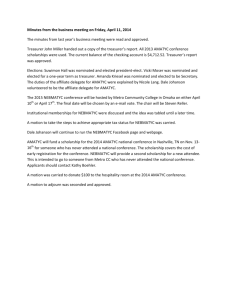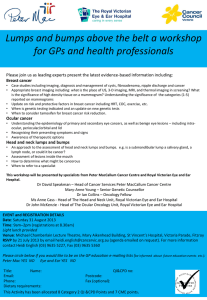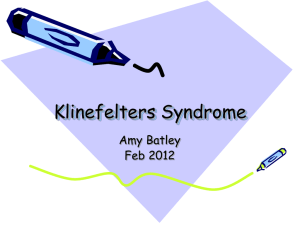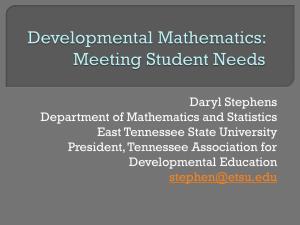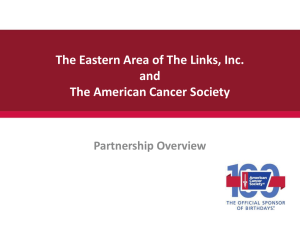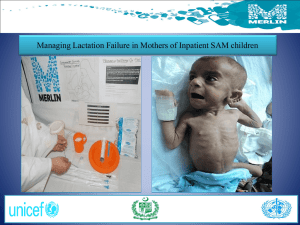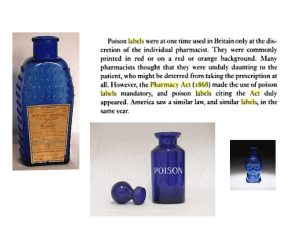Probability That Students Can Understand
advertisement
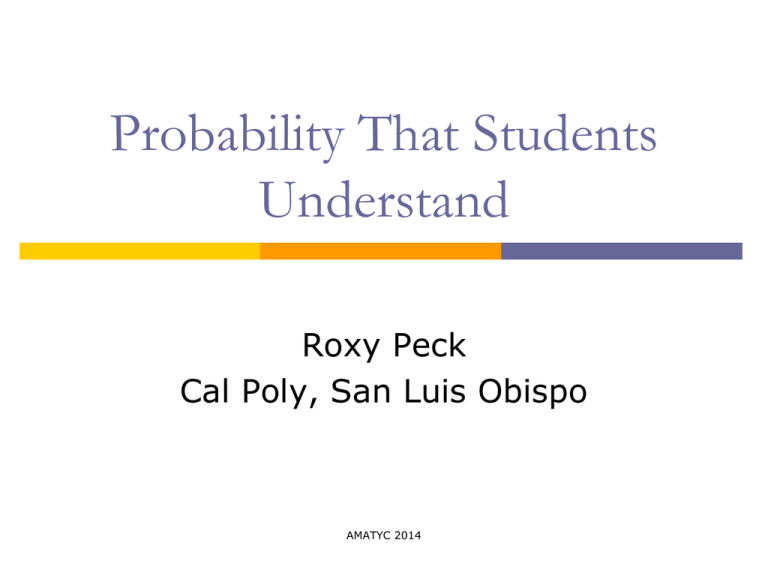
Probability That Students Understand Roxy Peck Cal Poly, San Luis Obispo AMATYC 2014 Humor me by doing a quick problem. Suppose you are one of these 1000 people and you test positive. Should you be really worried? If someone tests positive, what is the probability that they actually have the virus? That is, what proportion of people who test positive have the virus? 4 0.08 Easy, right? 54 AMATYC 2014 Here is what this looks like in a typical book A certain virus infects one in every 200 people. A test used to detect the virus in a person is positive 80% of the time if the person has the virus and 5% of the time if the person does not have the virus. Let A be the event that “the person is infected” and B be the event “the person tests positive.” Using Bayes’ Theorem, if a person tests positive, determine the probability that the person is infected. AMATYC 2014 How the student is supposed to solve it… Let A be the event that “the person is infected” and B be the event “the person tests positive.” P(A) = 1/200 = 0.005 P(not A) = 0.995 P(B|A) = 0.80 P(B| not A) = 0.05 Then use P( A) P( B | A) P( A | B) P( A) P( B | A) P(not A) P( B | not A) This is hard for students! But this is the same problem that people solve intuitively if they have a data table. We need to connect the two! AMATYC 2014 Let’s teach them to do this… Test Positive Test Negative Total Has Virus 4 1 5 DoesNot Have Virus 50 945 995 Total 54 946 1000 Same problem, same answer, but easy! NOT “dumbing” down—students can still do all of the same types of problems. Just takes advantage of how people naturally reason. AMATYC 2014 Time to Rethink Probability in the Intro Stat Course The good news is that we know more now about how people understand probability than we did 15 years ago. Turns out that people don’t necessarily find the ideas of probability, like conditional probability and Bayes rule-like thinking, hard. What they find hard is AMATYC 2014 This stuff AMATYC 2014 The symbols and formulas distract from the reasoning. There is now evidence that people have a much easier time reasoning about natural frequencies than about relative frequencies, particularly when the numbers are very small. (Much easier for people to understand 1 in 10,000 than 0.0001.) I have become a fan of the hypothetical 1000 approach using tables advocated by Gigerenzer, Strogatz and others. AMATYC 2014 For a great short discussion, see “Chances Are” article in the New York Times online by Steve Strogatz http://opinionator.blogs.nytimes.com/2010/ 04/25/chances-are/ AMATYC 2014 From this article… “The trick is to think in terms of ‘natural frequencies’—in simple counts of events rather than the more abstract notions of percentages, odds, or probabilities. As soon as you make this mental shift, the fog lifts.” AMATYC 2014 Interesting study… From “Calculated Risks” by Gert Gigerenzer. Told doctors in Germany and the U.S. the following: a woman in a low risk group (age 40 to 50 with no family history of breast cancer) has a positive mammogram. What is the probability that she actually has cancer? AMATYC 2014 To make the question specific, also given the following information: The probability that a woman in this low risk group has breast cancer is 0.8 percent. If a woman has breast cancer, the probability that she will have a positive mammogram is 90 percent. If a woman does not have breast cancer, the probability that she will have a positive mammogram is 7 percent. AMATYC 2014 What would the doctors tell the woman with a positive mammogram? 25 German doctors estimated the probability that the woman has breast cancer given that she had a positive mammogram. Estimates ranged from… 1 percent to 90 percent!! 8 of 25 doctors said 90%. 9 of 25 doctors said between 50 and 80 percent. 8 of 25 said 10 percent or less. American doctors did worse! About 95% said somewhere around 75% AMATYC 2014 So what is the right answer??? The probability that a woman in this low risk group has breast cancer is 0.8 percent. If a woman has breast cancer, the probability that she will have a positive mammogram is 90 percent. If a woman does not have breast cancer, the probability that she will have a positive mammogram is 7 percent. AMATYC 2014 Asked another way… 8 out of 1000 women in this group have breast cancer. Of these 8 women with breast cancer, 7 will have a positive mammogram. Of the 992 women who do not have breast cancer, 70 will have a positive mammogram. Imagine the group of women who would have a positive mammogram. How many of these women actually have breast cancer? AMATYC 2014 So What Should We Do?? A few questions to think about… Do students really need to know the difference between P(A|B) and P(B|A)? Yes! For example, probability that a woman that has breast cancer tests positive vs. probability that a woman who tests positive has breast cancer. Can be very different! Do students really need to know the formula for Bayes Rule? Really? Probably not. Are we OK with students understanding the difference between a 1 in 1000 chance and a 1 in 10,000 chance, even if they don’t fully understand this in terms of probabilities—0.001 vs. 0.0001? I am! AMATYC 2014 Classroom Suitable Examples See Handout for activity and contexts: Should You Paint the Nursery Pink classroom activity. 5 contexts for probability problems. AMATYC 2014 Should You Paint the Nursery Pink Some of the questions posed in activity 1: How likely is it that a predicted gender is correct? Is a predicted gender more likely to be correct when the baby is male than when the baby is female? If the predicted gender is female, should you paint the nursery pink? If you do, how likely is it that you will need to repaint? Extensions all the way to Bayes Rule problems. AMATYC 2014 Five Conditional Probability Contexts Working with a partner, use one of the contexts provided to write a question involving conditional probability that you could assign in your introductory statistics class and then use the hypothetical 1000 table approach to solve it. AMATYC 2014 Wrap-Up Do you think that your students would be able to learn from an activity like the one discussed in this session (Should you paint the nursery pink?)? Do you think that the important ideas of probability and particularly conditional probability will be less of a stumbling block for students than the traditional formula based approach? AMATYC 2014 Thanks! Thanks for attending this session. Please feel free to contact me if you have any questions about the activities or suggestions for improving them. rpeck@calpoly.edu AMATYC 2014
